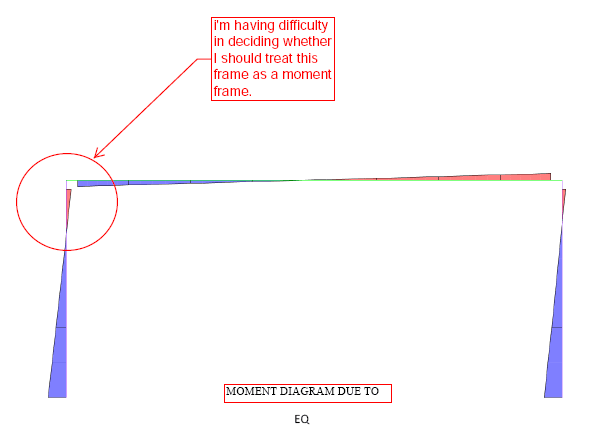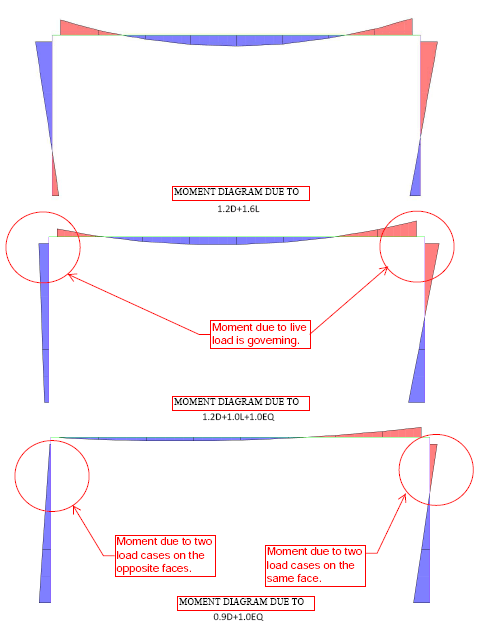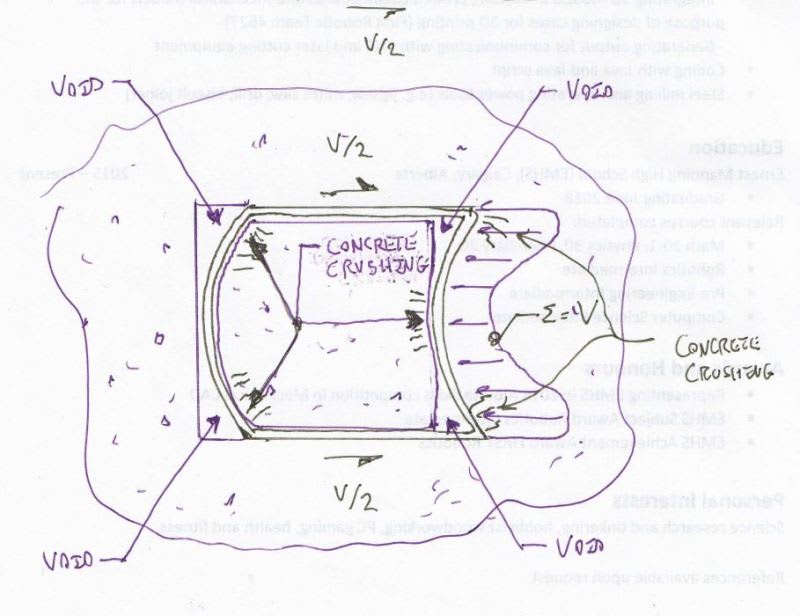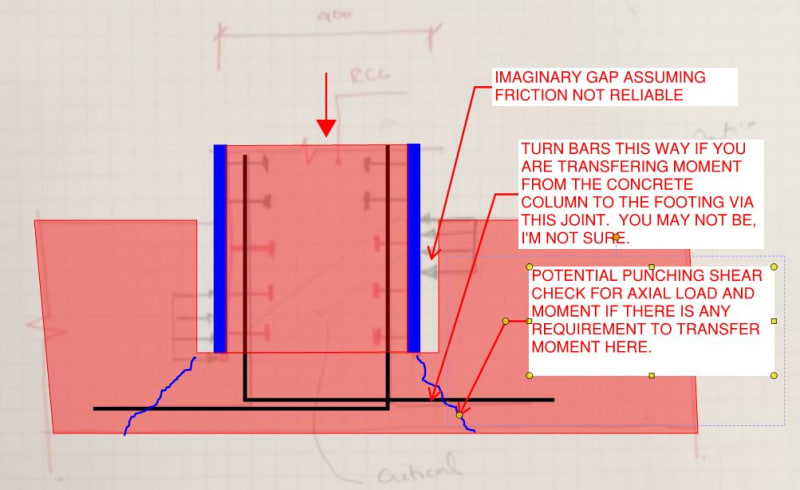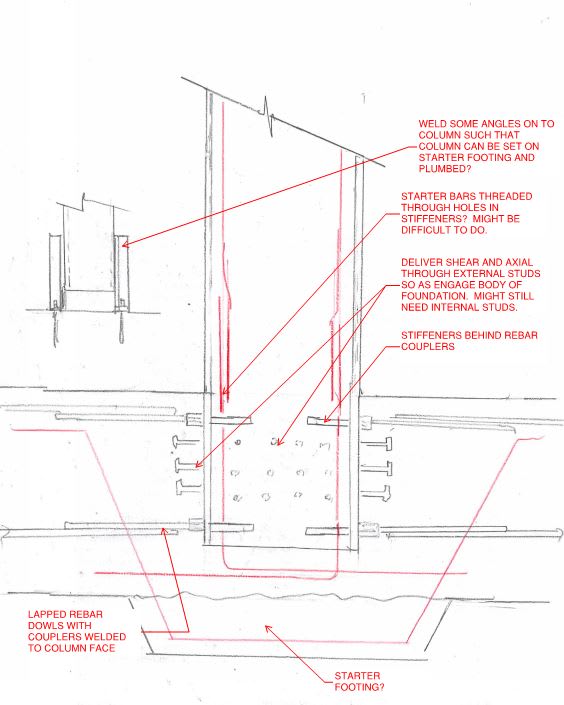Blackstar123 said:
I'm thinking of providing a base connection like shown in the picture, which I think would be more ductile than the anchor bolts assembly.
Ductility is always a good thing but this will technically be a connection that you design via over-strength or capacity design to
not yield. Rather, you're forcing the plastic hing to form in the column above the base connection. At lease, that's the usual approach.
Blackstar123 said:
What I've observed in the short time in this forum, is that connection detailing is considered your forte. I'd greatly appreciate your thoughts in this regard too.
Thanks for that. Considerations of skill aside, detailing problems are far and away my favorite on this forum. It's great getting to throw around a bunch of high minded concepts and then leaving it to some other poor sap to sort out the details. Now that you've invited me across the threshold...
First and foremost, be thinking about the construct-ability aspects of the connection. Will they suspend the column from a crane while they cast the footing? Will they cast a small length of column into the footing and weld the rest on later? What are the requirements for column plumbing and how will they be met? This stuff is best discussed with your local contractor if you have access to that person.
Blackstar123 said:
I don't get why column needs to be stiffened if it's filled with concrete.
I agree with Agent666's stiffener suggestion. See this related thread on shear lugs and you'll understand my position:
Link. It contains a number of illustrative sketches by yours truly including the one shown below.
Blackstar123 said:
The detail you're proposing would be advisable if I weren't providing a monolithic connection between column and foundation. The detail I've proposed, I don't see bearing due to vertical load be a problem in the sense you're implying.
I feel that you may indeed have an issue with respect to the handling of the axial stresses being delivered from the column into the foundation. The clip below shows how I'm seeing things. Much depends on the load path story that you plan to tell but, from what I can see, you mean for much of the axial stresses in the column (steel and concrete) to pass through the pier shown below. That may give you grieve with punching shear etc at the bottom of the footing. This is just something that needs checking, that's all.
That said, you may well be planning to pass some of the steel axial stresses from the column to the body of the foundation through contact surface friction on the outside of the column. And maybe that works. I've seen stuff for steel pile embedments that suggest wildly high capacities developed over very short lengths. However, I personally wouldn't want to rely on that mechanism for something like this where you're planning to resist cyclical loading that might tend to disrupt the contact friction surface.
